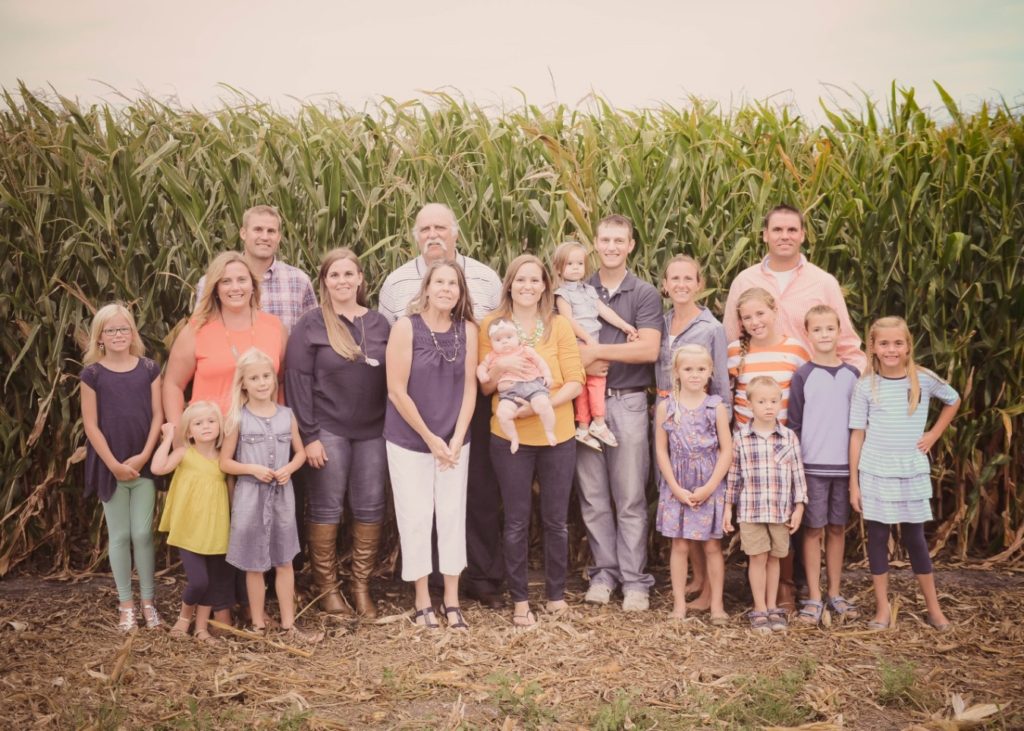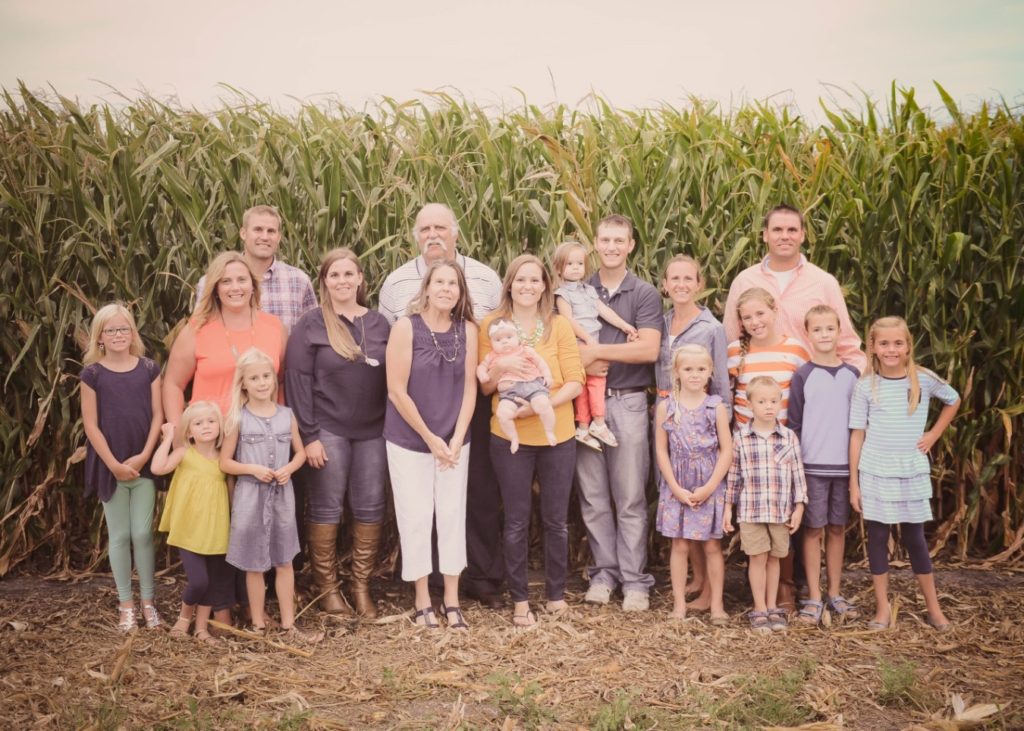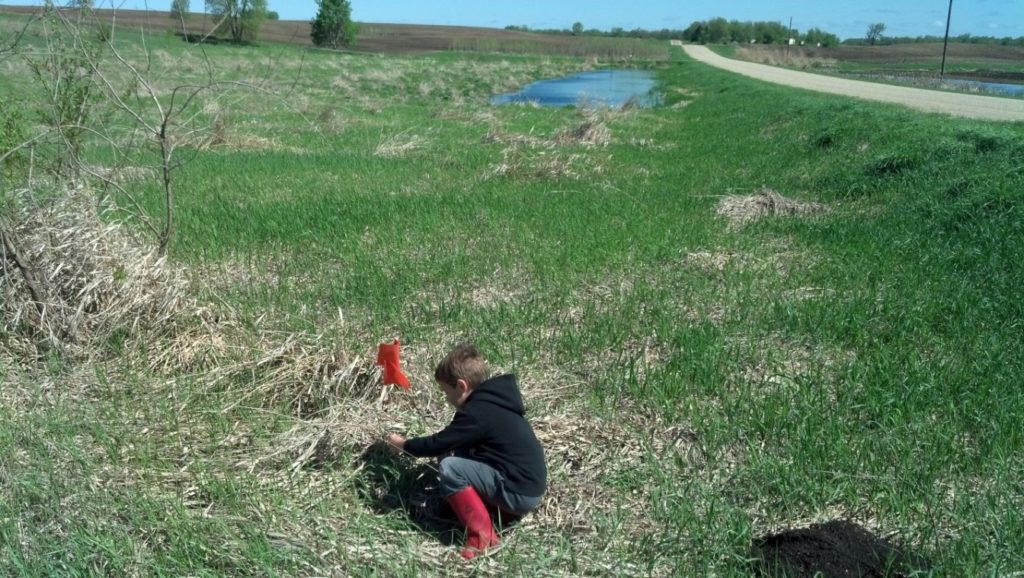
Nate Hultgren, a fourth generation farmer in central Minnesota takes sustainable agriculture personally. To Nate and his brother, it’s a familial responsibility, a duty to their consumers and an obligation to the land on which their families depend. Read more about Hultgren Farm’s personal relationship with sustainability in this interview* with Nate:

Describe your farm.
Hultgren Farms is a 2,000-hectare (5,000 acre) farm located in central Minnesota. We are a fourth generation family operation. Currently the farm management team is comprised of me [Nate], my brother Noah Hultgren and our father Duane Hultgren. We have a diverse crop and livestock mix, including maize for grain and silage, soybeans, industrial hemp, alfalfa, sugar beets, sweet corn, dark red kidney beans, and 120 head of cattle.
What does sustainability mean to Hultgren Farms?
First and foremost, sustainable agriculture is the ability for us to pass on an opportunity to our children, should they choose to live and/or work here. Between my brother and me, there are eight young kids running around the farm. Practically everything we do here is in the name of sustainability. We know that the soil and the water that lies beneath our farmland are absolutely critical to our success both now and in the future, and so we continue to modify our practices to reduce our impacts on the environment.
Second, we must make business decisions that add value to all of our products. As farms grow in size and operating margins continue to shrink, we must find ways to be economically sustainable. By being willing to take extra steps, or by doing the more complicated work to produce specialized products, we ensure our survival in a “lowest-cost seller” commodity world.
In other words, we must be prudent stewards of both our natural and our financial resources.

How does Hultgren Farms work to conserve its environmental resources?
Since 2012, we have participated in the [USDA] Natural Resources Conservation Services’ Conservation Stewardship Program. Through some cost assistance in this program, we have been able to initiate practices that have benefited our environment including variable rate fertilizing, GPS-controlled sprayer application, livestock grazing management programs, nitrogen stabilization, phosphorus management, plant tissue testing, and tillage reduction.
In addition, we have coupled reduced tillage with reduced water requirements on our irrigated soils, and used split applications of nitrogen to allow better utilization for the crop and to create less loss to the soil profile. We plant filter strips along our drainage ditches, and are installing pattern tile for better drainage management. We also inter-seed cover crops on over 40 hectares (1,000 acres) of our land each spring as a ‘nurse crop’ to reduce erosion and protect young plants from wind damage.
We are in the process of converting 32 hectares (80 acres) of crop land to a permanent easement conservation area, establishing wetland credits and seeding permanent cover on highly erodible land.

How does Hultgren Farm’s interact with its community?
We truly believe is it important to support our community by being an active contributor.
Hultgren Farms takes an active role by sponsoring local school events and charities. My brother, my father and I serve on several boards of directors pertaining to our industry, as well as on St. Johns Township Board of Supervisors, Minnesota Pollution Control Advisory Board, and the local school facilities committee.
For our elderly neighbors, we mow lawns and remove snow. Every summer Hultgren Farms sponsors a community family golf tournament at Hawk Creek Country Club in Raymond, MN. Twice a year, through the Minnesota Department of Transportation’s Adopt-A-Highway program, Hultgren Farm’s employees clean garbage along 4 kilometers (3 miles) of road. Staff also mow the road ditches around the neighborhood once a year.
Why is it important for Hultgren Farms to be economically, socially and environmentally sustainable?
Because we live and work in the same community in which we farm, we place a great deal of importance on helping build successful schools, churches, “main street” commerce, and civic organizations. By being an example of good behavior in both our economic and biological environments, we will continue to help feed a growing global population while at the same time passing along valuable sustainable agriculture traditions to our children.
Can you share a farming technology or development that has dramatically improved your farm’s operations and sustainability efforts?
Technology is so important to farmers everywhere. If my forefathers had been afraid to use new tools to farm the land I live on, our family farm would not exist today. But somehow, technology in crop and livestock production has gotten a black mark on it. For example, I feel that many consumers fear biotechnology because they do not understand its benefits and how it helps farmers conserve natural resources.
Biotechnology has made sustainable agriculture for our farm easier. Sugar beets are one example. We have grown sugar beets on our farm for three generations. Frankly, there have been years when the sugar beet crop was the only thing keeping us in business because other crops such as maize and soybeans were selling at prices below our cost to produce them. Before biotechnology, we would spend hundreds of dollars to control weeds; and even then we could expect a yield of about 49.28 tonnes per hectare (22 tons per acre).
Thanks to advances in beet seed genetics and biotechnology, we have been able to cut those costs in half, reduce chemical usage and cut the number of times we drive across the field in half, which reduces fuel and related greenhouse gas emissions, time and soil compaction. Yields are now closer to 58.28 tonnes per hectare (26 tons per acre), which has helped stabilize supply and as a result helped farmers and our local sugar processing cooperative remain economically viable and helped sustain jobs in our small town. And that means the outlook is positive for my children to be beet producers if they choose.
In short, biotechnology has helped us reduce the farm’s carbon footprint, reduce chemical use, and improve soil health. It has also helped create rural job stability and opportunities for future rural generations — THAT is textbook sustainable agriculture.
###
* This interview has been edited for length and content
Photos courtesy of Nate Hultgren


